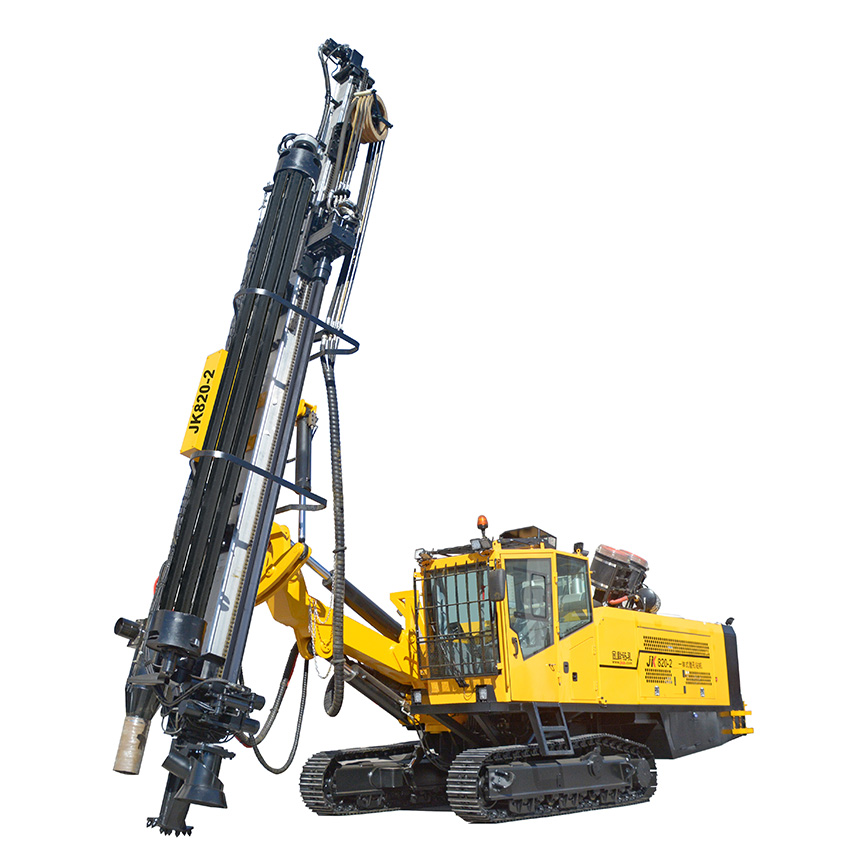Down-the-Hole (DTH) drilling is a powerful and efficient method used in the mining, construction, and geotechnical industries for drilling boreholes into the Earth's subsurface. This technique involves a pneumatic or hydraulic hammer attached directly to the bottom of the drill string. As the name suggests, the hammer is situated "down the hole," delivering impact energy directly to the drill bit, making it a popular choice for various drilling applications.
Components of the DTH System:
Drill Rig: The equipment responsible for supporting and operating the entire drilling process.
Drill String: A series of connected drill rods that transmit rotation and impact force to the drill bit.
DTH Hammer: The central component that delivers impact energy to the drill bit. It comes in various sizes and designs to suit different drilling requirements.
Drill Bit: Attached to the end of the drill string, the drill bit is responsible for cutting and breaking the rock or soil.
Casing (optional): In some applications, a casing may be used to prevent the borehole from collapsing.
How DTH Drilling Works:
Percussion Mechanism: The DTH hammer contains a piston that moves up and down within the hammer casing. As compressed air or hydraulic fluid is forced into the hammer, it drives the piston downward, creating a powerful impact.
Transfer of Energy: The impact energy generated by the piston is transferred through the drill bit to the rock or soil formation at the drill face. This impact fractures and breaks the material.
Rotation and Cuttings Removal: Simultaneously, the drill string is rotated, allowing the drill bit to cut through the formation. The broken material, known as cuttings, is flushed out of the borehole by air or water.

Advancement and Borehole Formation: The combination of impact force, rotation, and cuttings removal allows for the continuous advancement of the borehole to the desired depth
Advantages of DTH Drilling rig:
High Penetration Rates: DTH drilling is known for its ability to achieve high penetration rates, making it efficient for rapid drilling in various rock formations.
Related links:Versatility: The method is versatile and suitable for a wide range of applications, including mining, construction, water well drilling, and geotechnical exploration.
Accuracy and Precision: DTH drilling offers precise control over the drilling process, allowing for accurate borehole placement and alignment.
Effective in Hard Rock: Particularly effective in hard rock formations where conventional drilling methods may struggle.
Minimal Hole Deviation: The design of DTH systems minimizes hole deviation, ensuring that the borehole remains on the intended path.
Less Susceptible to Hole Collapse: The method is less susceptible to hole collapse since the drilling fluid or air used in DTH drilling helps to stabilize the borehole.
Applications of DTH Drilling:
Mining: Commonly used for exploration drilling, production drilling, and grade control in mining operations.
Water Well Drilling: DTH drilling is widely employed for the construction of water wells, providing access to underground aquifers.
Geotechnical Exploration: Used for soil sampling, geological investigations, and environmental monitoring.
Construction: Applied in various construction projects, including foundation drilling and piling.
Oil and Gas Exploration: DTH drilling is used in the exploration of oil and gas reserves.
Conclusion:
The DTH drilling method, with its powerful and versatile approach, continues to be a preferred choice in industries where efficient and precise borehole creation is essential. Whether in mining operations, water well construction, or geotechnical exploration, DTH drilling stands as a reliable and effective technique for penetrating diverse rock formations and subsurface environments.
203
0
0
All Comments (0)
Related Articles
If you are interested in sending in a Guest Blogger Submission,welcome to write for us!
Comments